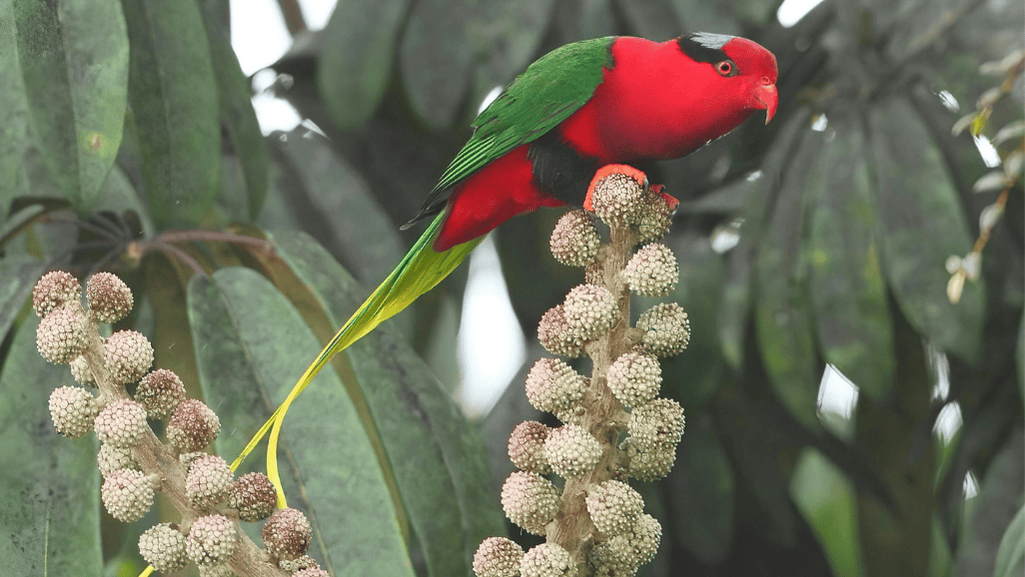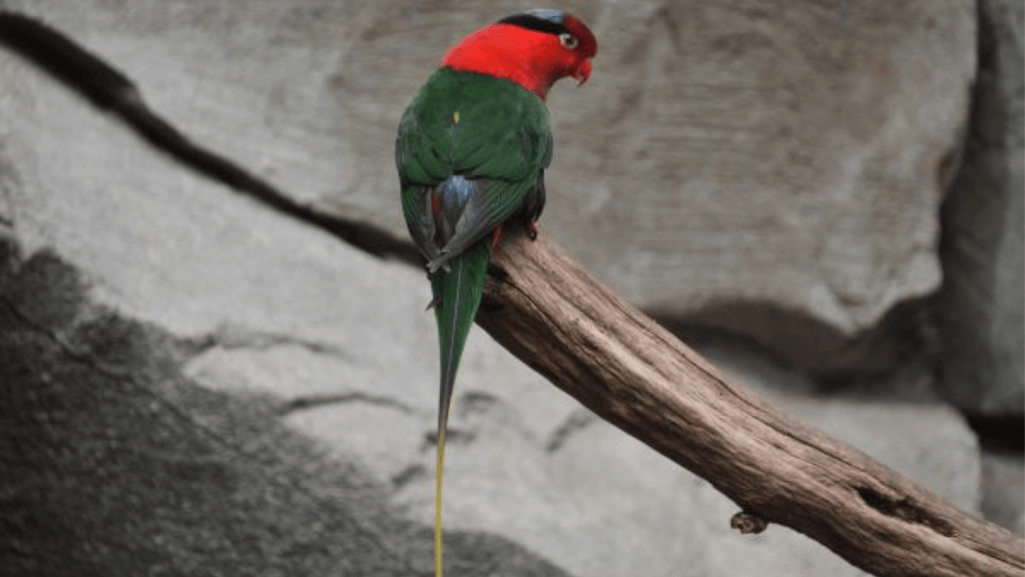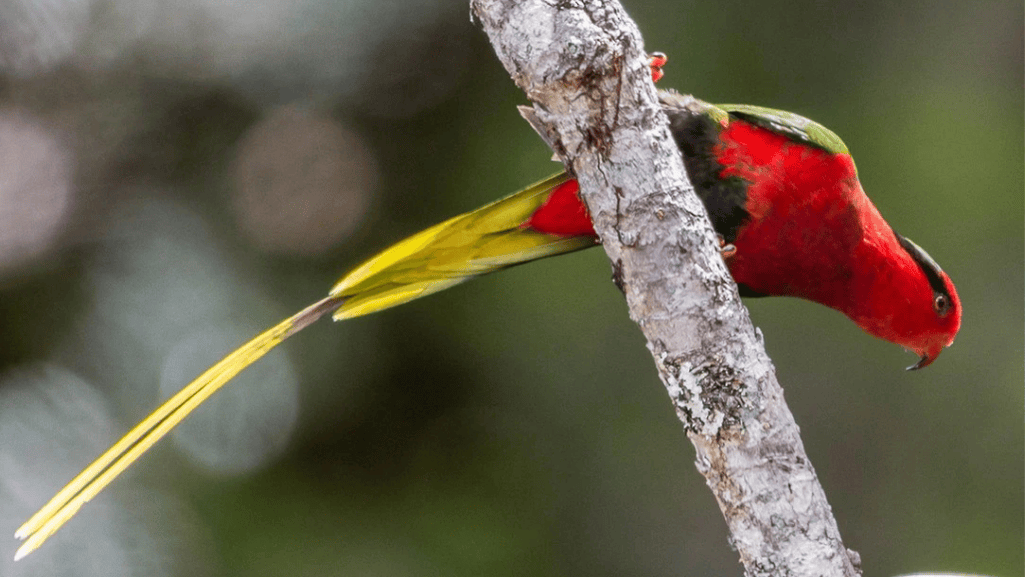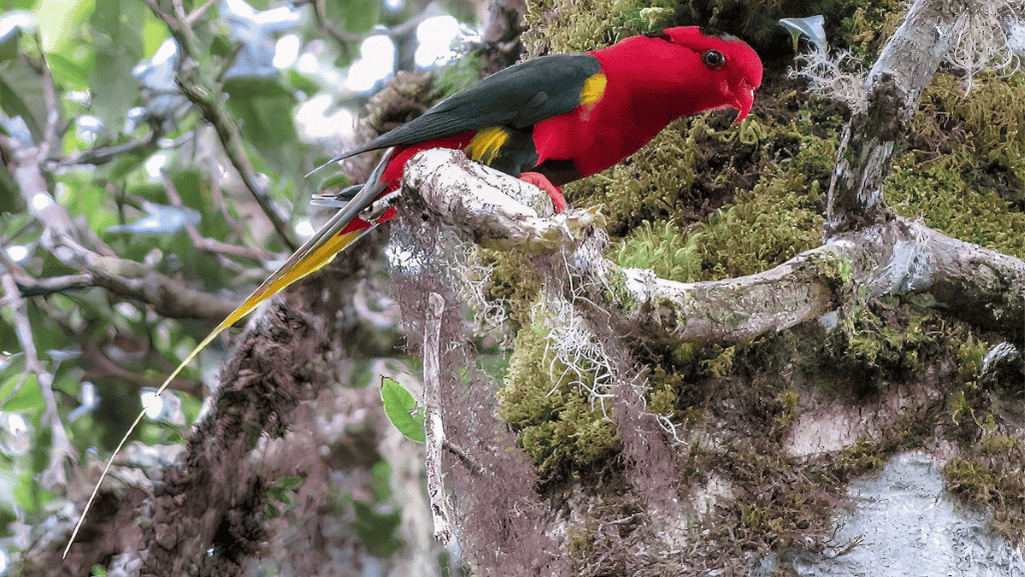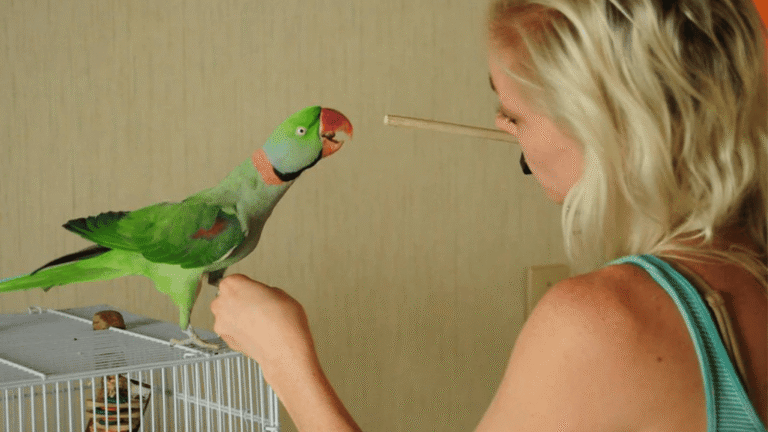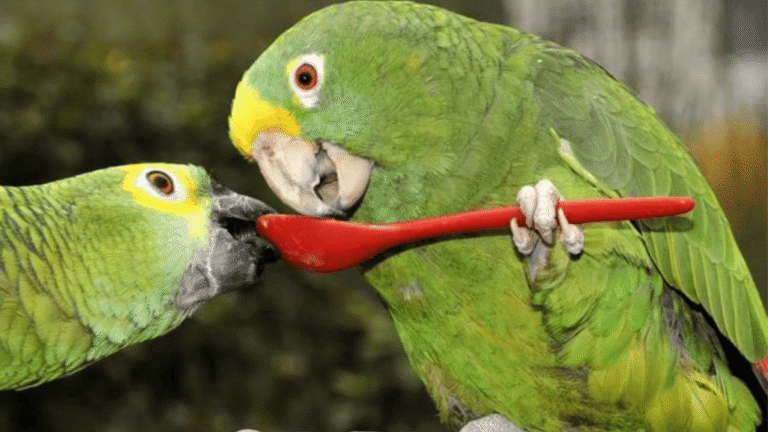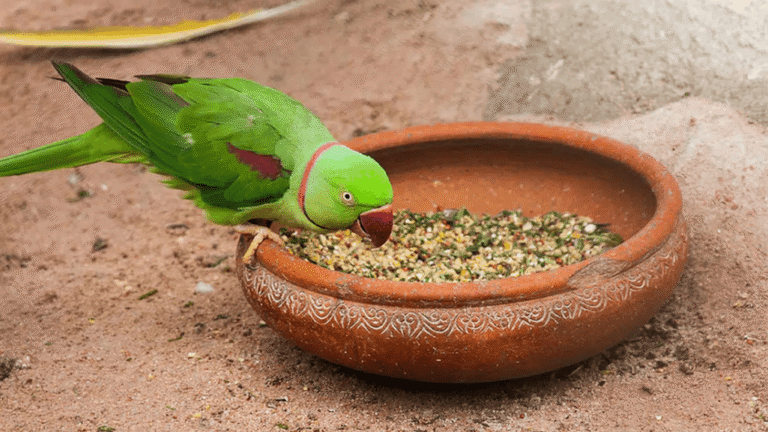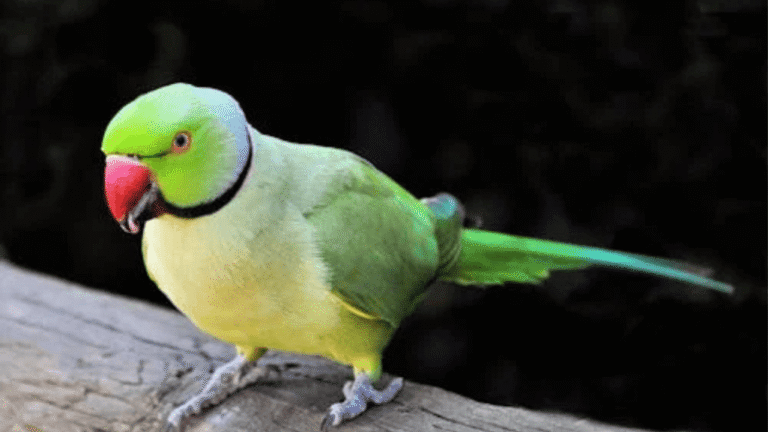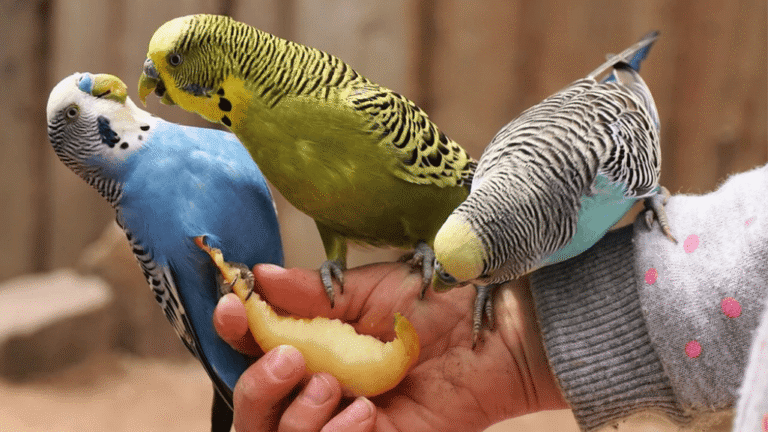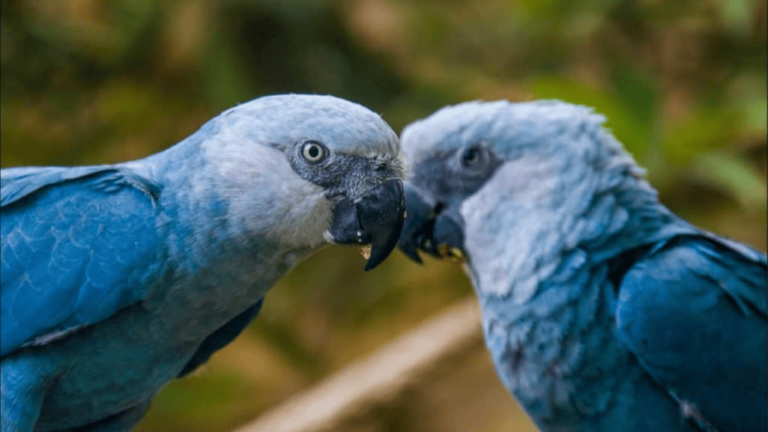Start a journey through New Guinea’s lush, highland forests. Here, you’ll see the Papuan Lorikeet, a bird that shows the beauty of tropical birds. Its bright colors of reds, yellows, and greens catch your eye and touch your heart.
This parrot is known for more than its looks. Its fun behavior and friendly nature make it a favorite among birdwatchers in Papua. The Papuan Lorikeet’s aerial stunts amaze everyone, making it a symbol of Papua New Guinea’s bird diversity.
Key Takeaways
- Spectacular presence of the Papuan Lorikeet in New Guinea’s mountainous regions.
- Importance of the Papuan species for birdwatching enthusiasts exploring Papua.
- Intrinsic value of conserving tropical bird species and their habitats.
- Unique behavior and sociable nature of this colorful parrot.
- Role of the Papuan Lorikeet as an ambassador for Papua New Guinea’s biodiversity.
Introduction to the Colorful Papuan Lorikeet
The exotic bird species of New Guinea, like the Papuan Lorikeet, are known for their bright colors and lively nature. Their stunning colors and social behavior highlight the rich Papuan wildlife. They offer great Papuan birdwatching opportunities. This lorikeet species is not just a sight to see but also a symbol of the area’s ecological diversity.
The Papuan Lorikeet is small but impressive, with a length of about 25 cm and a weight of 90 to 115 grams. They have a mix of red, dark green, blue, and yellow colors with unique patches. Whether flying or sitting still, the Papuan Lorikeet shows the beauty of Papua’s ecosystems.
| Characteristic | Detail |
|---|---|
| Size | 25cm (9.75 in) |
| Weight | 90-115g (3.1-4 oz) |
| Coloration | Red, dark green wings, blue and yellow patches |
| Nest Box Size | 6″ x 6″ x 12″ (15.2cm x 15.2cm x 30.5cm) |
| Clutch Size | 2 eggs |
| Incubation Time | Approximately 26 days |
| Fledging Age | 60 days |
| Hatch Weight | About 4g (0.14 oz) |
| Captive Status | Uncommon in captivity |
| Longevity | 15 or more years in captivity |
The Papuan Lorikeet’s colors attract many papuan birdwatching fans. They come from all over to see these birds in their natural habitat.
The Native Habitat of the Papuan Lorikeet
The Papuan lorikeet habitat in the New Guinea highlands is a stunning display of nature’s beauty. Here, in the lush rainforests and tropical climates, these birds thrive. Let’s explore the habitats that support this vibrant New Guinea bird species.
Mountainous Regions of New Guinea
The mountainous regions of New Guinea are not just beautiful but also crucial for the Papuan Lorikeet. The high altitudes offer a variety of nectar-rich flowers and insects. This tropical bird depends on these highland forests for survival.
Tree Cavities and Tropical Climates
In New Guinea’s rainforests, tree cavities are perfect for papuan lorikeets to nest. These natural shelters protect them from predators and harsh weather. The tropical climate ensures a steady food supply, keeping the lorikeet habitat healthy and vibrant.
| Characteristics | Details |
|---|---|
| Size | 25cm (9.75 in) |
| Weight | 90-115g (3.1-4 oz) |
| Nest Box Size | Vertical box 6″ x 6″ x 12″ (15.2cm x 15.2cm x 30.5cm) |
| Clutch Size | 2 |
| Incubation Time | 26 days or more |
| Fledging Age | 60 days |
| Hatch Weight | 4g (0.14 oz) |
| Longevity in Captivity | 15+ years |
Every part of the papuan lorikeet habitat, from the mountainous regions to the tree cavities, supports these tropical birds. It’s vital to protect these habitats for the lorikeets and all rainforest wildlife in New Guinea.
Ornithological Marvel: The Unique Features of Papuan Lorikeets
The Papuan Lorikeet is a true ornithological marvel among colorful bird species. These lorikeet birds have feathers that shine in red, yellow, and purple. Their bright colors help them blend in with Papua New Guinea’s rainforests.
One key feature of the Papuan Lorikeet is their special tongue. It’s perfect for getting nectar and pollen from flowers. This helps them pollinate plants, playing a big role in the ecosystem.
- Brilliant plumage for effective camouflage
- Brush-tipped tongue for feeding on nectar
- Agile flight capabilities, optimized for navigating dense foliage
- High-pitched calls and songs, contributing to their complex communication
Their special traits show how important they are in their home. Studies show they live in harmony with their environment. This is a beautiful example of nature’s connections.
Papuan Lorikeets are loved for their looks and role in nature. They amaze bird lovers and scientists everywhere. They are a symbol of the beauty and importance of Papua New Guinea’s wildlife.
Mating Rituals and Breeding Season of Papuan Lorikeets
The Papuan Lorikeet breeding season is a big event for bird lovers and scientists. These birds, from New Guinea’s lush tropical areas, show off in mating rituals that are both colorful and complex.
Colorful Courtship Displays
The courtship of Papuan Lorikeets happens from September to November. Males, with their bright feathers, perform dances and sing to impress females. These lorikeet breeding habits help them find the right partner.
Nesting Practices and Egg Incubation
After mating, the focus is on nesting practices and egg incubation. Females build nests in tree cavities for their eggs. They usually lay two to three eggs, which they incubate for 24 to 26 days.
The Colorful parrots work hard during the lorikeet breeding season. Their efforts are crucial for the survival of their chicks. This ensures the chicks can grow and thrive in the wild.
Learning about these tropical birds during their breeding season is very important. It helps us understand and protect them. By watching these rituals, we see the beauty and complexity of nature in tropical climates.
For more information on these amazing birds, check out Rainbow Lorikeet. It offers a deeper look into their unique behaviors during breeding season.
Dietary Preferences of the Papuan Lorikeet
The Papuan Lorikeet is a vibrant bird found in New Guinea. It eats mostly nectar and pollen, with a lot of insects too. This diet shows how well the bird fits into its tropical home and helps pollinate plants.
Nectar and Pollen: Staple Foods of This Colorful Parrot
Nectar from New Guinea’s flowers is a key food for the Papuan Lorikeet. It gives the bird sugars like sucrose, fructose, and glucose. These sugars are important for the bird’s energy.
Even though nectar lacks some nutrients, its sugar content is very high. This is perfect for the lorikeet’s active lifestyle.
Role of Insects in Their Diet
Insects are also important in the lorikeet’s diet. They add protein, which is key for growing chicks. This ensures the chicks grow strong and healthy.
The diet of the colorful bird is carefully planned. It meets the bird’s needs at every stage of its life. This keeps the Papuan Lorikeet populations healthy and vibrant.
Learning about the lorikeet’s diet is interesting. It’s also vital for keeping their populations healthy. This knowledge helps in conservation efforts in Papua New Guinea.
| Food Type | Primary Components | Importance |
|---|---|---|
| Nectar | Sucrose, Fructose, Glucose | Primary energy source; aids in pollination |
| Pollen | Proteins, Micro-nutrients | Supplemental nutritional value |
| Insects | Protein | Essential for chick growth and development |
The diet of the Papuan Lorikeet shows how well it fits into its environment. It highlights the connection between these birds and New Guinea’s plants and animals.
Conservation Efforts to Protect the Papuan Lorikeet
The Papuan Lorikeet faces many dangers, making wildlife protection and conservation programs vital. This endangered species is threatened by habitat loss and human activities in Papua New Guinea.
Endangered Status and Threats to Their Population
Papuan Lorikeets are known for their bright colors and lively nature. But, their conservation status is at risk. Deforestation and the illegal pet trade are big problems. Climate change also harms their homes, pushing them closer to extinction.
Conservation Programs in Papua New Guinea
Many conservation programs are underway in Papua New Guinea to save these birds. They work on restoring habitats, stopping illegal trade, and teaching communities about bird species protection. Working together with local and global groups is key to protecting wildlife.
Thanks to ongoing Papuan Lorikeet conservation efforts, there’s hope for these birds. They might one day thrive again in their natural habitats. This would let their colors and songs fill the skies of Papua New Guinea once more.
Papuan Lorikeet Behavior and Social Dynamics
The Papuan Lorikeet’s world is full of color and complex social interactions. These birds are known for their friendly nature and amazing flying skills. They show us how important social dynamics are in their lives.
Sociable Nature and Acrobatic Flights
Lorikeets, like the Papuan species, love to fly together in big groups. Their flying is not just fun; it’s also how they connect with each other. This flying helps them stay close and work out their social issues.
Parental Care and Chick Development
Parenting is a big deal for Papuan Lorikeets. From the start, chicks rely on their parents for everything. The parents feed them a special mix of food that helps them grow strong. This care is key to the chicks’ survival and growth.
Papuan Lorikeets live in a world full of color and community. Their behavior and how they raise their young teach us about tropical bird life. It shows us the beauty of nature in places like New Guinea.
| Behavior | Description | Importance in Social Structure |
|---|---|---|
| Acrobatic Flights | Dynamic and intricate flying patterns | Enhances social bonding and group cohesion |
| Parental Care | Feeding and protection of chicks | Essential for chick survival and development |
| Social Interactions | Constant communication and interaction within flocks | Crucial for maintaining social hierarchy and stability |
Watching a flock of Papuan Lorikeets fly is more than just pretty to look at. It shows their friendly nature and how they live together. These birds are a big part of Papua New Guinea’s beauty and life.
Papua New Guinea: A Birdwatcher’s Paradise
For those who love tropical birdwatching, Papua New Guinea is a top spot for wildlife exploration. It’s famous for its Papuan avian species and offers great birdwatching opportunities. The Papuan Lorikeet is a highlight, with its bright colors. Both new and seasoned birdwatchers will find joy in birdwatching in Papua.
| Region | Endemic Bird Species |
|---|---|
| Mainland | 33 |
| Adelbert Mountains | 1 |
| Huon Peninsula | 5 |
| Bismarck Archipelago | 68 |
| Bougainville Island | 12 |
Spotting the Papuan Lorikeet in the Wild
In the highland rainforests, birdwatchers can see the exotic bird species like the Papuan Lorikeet. Its bright red and blue feathers show the beauty of New Guinea bird species. The area’s unique ecosystem is full of wildlife, perfect for bird lovers.
Other Exotic Bird Species to Discover
Papua New Guinea is not just about the Papuan Lorikeet. It’s also home to many other exotic bird species. You can see birds-of-paradise, kingfishers, and honeyeaters. Each adds to Papua New Guinea’s rich biodiversity.
Papuan Lorikeet Facts: Understanding This Tropical Bird
The Papuan Lorikeet is a stunning tropical bird with vibrant colors. It’s known for its beautiful plumage. These colorful parrots live in the lush landscapes of New Guinea.
Learning about lorikeet information is interesting for bird lovers and conservationists. They want to protect the homes of these birds. Here are some Papuan Lorikeet facts that show why they are so fascinating.
| Characteristic | Detail |
|---|---|
| Size | Approximately 26 cm (11 in.) |
| Weight | Approximately 133 g (5 oz) |
| Incubation Period | 24 to 25 days |
| Clutch Size | 3 to 4 eggs |
| Fledging Duration | 10 weeks |
| Sexual Maturity | Approximately 2.5 years |
| Life Span | 28 to 32 years |
| Population Estimate | 5,610,000 |
| Daily Feeding | Can feed on as many as 650 flowers |
| Travel for Food | More than 48 km (30 mi.) a day |
These Papuan lorikeet facts show how special this tropical bird is. They travel far for food and live in big groups. This shows their important role in their ecosystem.
By learning more about the colorful parrot, we can appreciate them more. We also make a promise to protect them and their homes.
Challenges Facing the Papuan Lorikeet Population
The Papuan Lorikeet, a vibrant bird of Papua New Guinea, is in trouble. It faces habitat loss and human encroachment threats.
Habitat Loss and Human Encroachment
People are cutting down forests for farms and cities. This reduces the Papuan Lorikeet’s home and food. Logging and mining also harm the environment and the Papuan wildlife. This makes the lorikeet conservation status worse.
Climate Change Impact on Their Ecosystem
Climate change adds to the problems. It changes the weather and temperature. This affects the Papuan Lorikeet’s breeding and feeding.
Changes in weather and temperature also affect plants. This means less nectar for the birds. So, climate change puts more pressure on their ecosystem.
We need to keep working on bird conservation. This is crucial to save the Papuan Lorikeets. Without help, their future is uncertain. It’s a big challenge for those trying to protect them.
| Challenge | Impact | Conservation Action Required |
|---|---|---|
| Habitat Loss | Decrease in living and breeding spaces | Protect and restore habitat areas |
| Climate Change | Alteration in food availability and breeding conditions | Implement strategies to manage climate risks |
| Human Encroachment | Disruption of natural habits and food sources | Enforce stricter regulations on land use and deforestation |
Papuan Lorikeet in Culture and Local Significance
The Papuan Lorikeet is a symbol in Papua New Guinea’s papuan traditions and folklore. It’s a colorful parrot that brings beauty and deep cultural stories. This bird is key in local tales and myths, showing the community’s deep respect for nature.
Symbolism in Indigenous Cultures
The colorful bird species is seen as a symbol of beauty and quickness in Papua New Guinea. It shows how nature is part of daily life and spiritual beliefs in indigenous cultures. With over 850 languages spoken, each group has its own story about the Papua New Guinea bird. The lorikeet is often seen in cultural events and traditional arts, showing its local significance.
Inspiration for Art and Folklore
The Papuan lorikeet is a big inspiration for art, from fabric to ceremonial dress. Artists use the lorikeet’s colors to create works that connect with . These stories are shared through generations and celebrated in festivals and performances.
Highlights from Cultural Events Featuring the Papuan Lorikeet
| Event Type | Description | Location |
|---|---|---|
| Traditional Dance | Feathers used in ceremonial dresses for tribal dances | Highlands and Coastal Areas |
| Art Exhibits | Artworks and textiles featuring lorikeet-inspired motifs | Local artistic communities |
| Cultural Festivals | Displays of traditional folklore where the lorikeet symbolism is prominent | Various regions celebrating indigenous heritage |
In dance, art, and festivals, the Papuan lorikeet is more than a colorful bird. It’s a key symbol that connects the past with today, keeping Papua New Guinea’s rich heritage alive.
Photographing the Papuan Lorikeet: Tips for Wildlife Photographers
For those who love tropical birds, photographing the Papuan Lorikeet is a must. These birds light up Papua New Guinea’s highland forests with their bright colors. They are a joy for both new and experienced photographers.
Best Times and Locations for Capturing Their Beauty
When it comes to wildlife photography, timing and location are everything. The Papuan Lorikeet is best photographed in the early morning or late afternoon. This is when the soft sunlight brings out their colors.
The highland forests are the perfect place for birdwatching in Papua. They offer a rich backdrop for your photos.
Technical Advice for Stunning Images
To capture the Papuan Lorikeet’s beauty, follow some key technical advice. Use a fast shutter speed to freeze their quick movements. Settings like f/6.3, 1/2500, and ISO 800 work well in their bright habitats.
Knowing how the birds behave helps you get great shots. Lorikeets are playful and active. They offer many opportunities for interesting photos. Patience and observation are crucial in wildlife photography.
| Species | Behavior | Location |
|---|---|---|
| Biak Scops Owl | Nocturnal, elusive | Highland forests |
| Twelve-wired Bird-of-paradise | Showy courtship displays | Lower montane areas |
| Biak Paradise-kingfisher | Bright plumage, fast flyer | Coastal bush regions |
Improving your wildlife photography skills means learning about different birds. For example, Cattle Egrets and Hornbills have unique behaviors. These insights add depth to your photos, engaging your audience more.
Photographing the Papuan Lorikeet is more than just taking pictures. It’s about appreciating the biodiversity of tropical ecosystems. These moments connect us with nature’s wonders.
Conclusion
The journey into the world of the papuan lorikeet shows their beauty and importance. These colorful birds are found only in Papua New Guinea. They play a key role as pollinators, adding to their charm.
Despite facing challenges, saving these tropical parrots is crucial. It’s not just for the environment but also to keep our world beautiful.
Lorikeets are fascinating, with unique behaviors and biology. Their role in keeping ecosystems balanced is vital. They are linked to about 5,000 plant species.
Knowing how they interact with plants and their habitats is key. This knowledge helps us protect these birds. It’s a call to action for conservation.
Supporting their habitat and welfare is more than just watching them. It’s a promise to protect our planet for the future. Let’s be inspired by the lorikeet’s strength and beauty.
Our actions should show our commitment to conservation. Through education and care for the environment, we can keep their world vibrant. Let’s make sure the skies of Papua stay full of these colorful birds.


